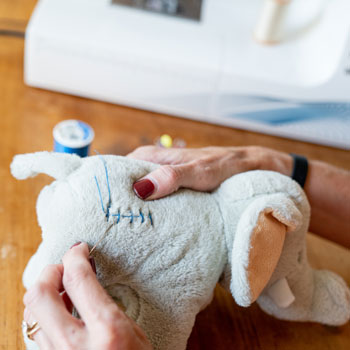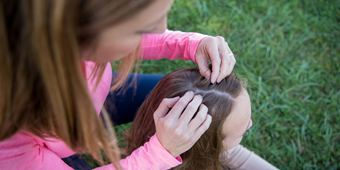Treat Your Stitches With Care

Find Your Perfect Match
Answer a few questions and we'll provide you with a list of primary care providers that best fit your needs.
If you’ve recently been treated for a deep cut to your skin (laceration), or if you’ve had surgery, the chances are you’ve gone home with some part of your body stitched up.
Stitches (also called sutures) have been used for millennia to close up a wound or a surgical incision so that the flesh can grow back together, and the body can heal. Sometimes, instead of stitches, special metal staples are used to close a wound.
To help avoid infection or other problems while you’re recovering, follow your doctor’s instructions on caring for your stitches and the incision site.
Caring for Your Stitches
 Keeping infection away begins with making sure your stitches stay clean and dry. When you leave the hospital or outpatient facility with your new stitches, your health care provider will let you know how soon it will be safe to shower and get the stitches wet. Until that time – typically 24 or 48 hours after your stitches were put in – you’ll need to be cautious around water.
Keeping infection away begins with making sure your stitches stay clean and dry. When you leave the hospital or outpatient facility with your new stitches, your health care provider will let you know how soon it will be safe to shower and get the stitches wet. Until that time – typically 24 or 48 hours after your stitches were put in – you’ll need to be cautious around water.
When the time comes, you can wash the area around the stitches gently a couple times day, but don’t wash or rub the stitches directly. If the area needs to be dried, dab at it gently with a clean paper towel. Try not to make direct contact with the stitches.
If you need to change the dressing (bandage) that’s protecting your stitches, your health care provider will give you instructions on when and how to do that. If they didn’t, or if you don’t remember, contact their office to see what they recommend.
To help avoid infection or other problems while you’re recovering, follow your doctor’s instructions on caring for your stitches and the incision site.
Other Cautions
Be careful to protect your stitches. Here are a few specific “don’ts”:
- Don’t scratch your stitches. You could introduce an infection or damage the stitches.
- Avoid any activities (such as sports or heavy physical work) in which the stitches could potentially be damaged.
- Don’t swim while you still have stitches in.
If you do have an accident that damages your stitches or opens your wound, let your health care provider know immediately.
How To Recognize an Infection
If you see any of the following signs around the site of your stitches, you could have an infection. Call your health care provider for advice.
- Redness or swelling around the area
- Warmth or an unpleasant odor coming from the wound
- Swollen glands
- Increased pain
- Pus or blood coming from the wound
- A fever
Getting Your Stitches Out
Your doctor probably told you when to come back in to have your wound checked and your stitches removed. If not, give the office a call and ask. Some stitches are made of a special material that can gradually dissolve on its own. These kinds of stitches won’t have to be removed.
Find Your Perfect Match
Answer a few questions and we'll provide you with a list of primary care providers that best fit your needs.
Source: National Health Service (UK); MedlinePlus




